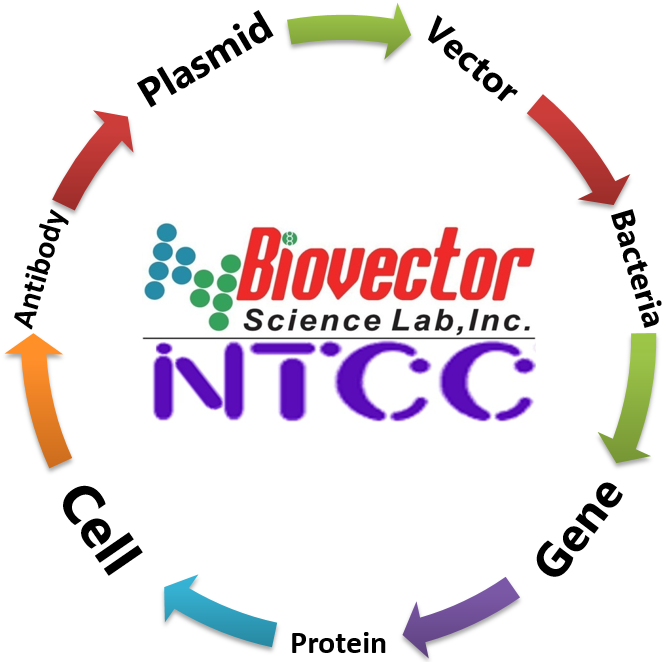Trichoderma reesei ATCC 56765 NTCC?里氏木霉菌株-BioVector NTCC質粒載體菌株細胞蛋白抗體基因保藏中心
- 價 格:¥39950
- 貨 號:NTCC?56765
- 產 地:北京
- BioVector NTCC典型培養物保藏中心
- 聯系人:Dr.Xu, Biovector NTCC Inc.
電話:400-800-2947 工作QQ:1843439339 (微信同號)
郵件:Biovector@163.com
手機:18901268599
地址:北京
- 已注冊
NTCC?
Trichoderma reesei ATCC 56765 is a highly significant and widely used strain in industrial biotechnology and academic research. It is more commonly known as Trichoderma reesei RUT-C30.
Here's a breakdown of its characteristics and importance:
Origin and Development:
T. reesei was originally isolated during World War II from deteriorating army tents in the Solomon Islands. The wild-type strain is designated QM6a.
T. reesei RUT-C30 (ATCC 56765) is a hyper-producing mutant strain. It was developed through multiple rounds of random mutagenesis (using UV light and chemical mutagens) and selection from the wild-type QM6a strain at Rutgers University (hence RUT) and later at the US Army Natick Laboratories (hence C30 for QM9414, the immediate predecessor, and further mutation).
The goal of this strain improvement was to overcome the limitations of the wild-type, particularly the low production of cellulases and the repression of cellulase synthesis by glucose (catabolite repression).
Key Characteristics of RUT-C30 (ATCC 56765):
Hyper-producer of Cellulases: This is its most defining feature. RUT-C30 produces significantly higher levels of cellulolytic enzymes (cellulases and hemicellulases) compared to its wild-type ancestor (QM6a) and other earlier mutants. This hypersecretion is due to a combination of genetic changes, including chromosomal rearrangements and mutations that affect gene expression and protein secretion machinery (e.g., increased endoplasmic reticulum content).
Catabolite Derepressed: Unlike many wild-type strains, RUT-C30 is less sensitive to catabolite repression by glucose. This means it can produce cellulases even in the presence of higher concentrations of readily available sugars, which is a major advantage for industrial fermentation processes that often use mixed carbon sources.
Broad Enzyme Profile: While renowned for cellulases (cellobiohydrolases, endoglucanases, beta-glucosidases), it also produces a range of other lignocellulolytic enzymes like xylanases, mannanases, and pectinases, which are crucial for breaking down complex plant biomass.
Mesophilic Filamentous Fungus: It grows optimally at moderate temperatures (around 25-30°C).
Genetically Characterized: Its genome has been sequenced, providing a detailed understanding of its genetic makeup and the mutations contributing to its hyper-secretory phenotype.
Applications:
Due to its exceptional enzyme production capabilities, Trichoderma reesei RUT-C30 (ATCC 56765) is a workhorse in various industries and research fields:
Biofuel Production (Bioethanol): This is perhaps its most significant application. Its cellulases are used to break down lignocellulosic biomass (like agricultural residues, wood chips, and switchgrass) into fermentable sugars (glucose and xylose), which can then be fermented by yeasts or bacteria into bioethanol and other biofuels. The high cost of enzymes has been a major hurdle, and RUT-C30 helps to reduce this cost by producing large quantities.
Industrial Enzyme Production: It's a primary industrial source for a wide array of enzymes used in:
Pulp and Paper Industry: For bio-bleaching, deinking, and improving paper quality.
Textile Industry: For "biostoning" (giving jeans a stonewashed look), softening fabrics, and improving fabric brightness and de-pilling in laundry detergents.
Food and Feed Industry: To improve the digestibility of animal feed, clarify fruit juices, produce functional foods, and enhance the extraction of oils (e.g., olive oil).
Brewing and Winemaking: Enzymes can improve fermentation processes and modify beverage viscosity.
Host for Recombinant Protein Production: While its success in producing heterologous (non-native) proteins has been mixed compared to its native enzyme production, T. reesei RUT-C30 is still explored as a host for expressing other industrially relevant enzymes or therapeutic proteins due to its robust protein secretion machinery.
Academic Research: It serves as a model organism for studying:
Enzyme secretion mechanisms: How filamentous fungi efficiently secrete large quantities of proteins.
Gene regulation: The genetic and molecular mechanisms controlling cellulase and hemicellulase expression.
Metabolic engineering: Manipulating its metabolic pathways to produce other valuable chemicals (e.g., l-malic acid) or improve enzyme yields further.
Biomass deconstruction: Understanding the synergistic action of various enzymes in breaking down complex plant cell walls.
BioVector NTCC質粒載體菌株細胞蛋白抗體基因保藏中心
www.biovector.net
- 公告/新聞




